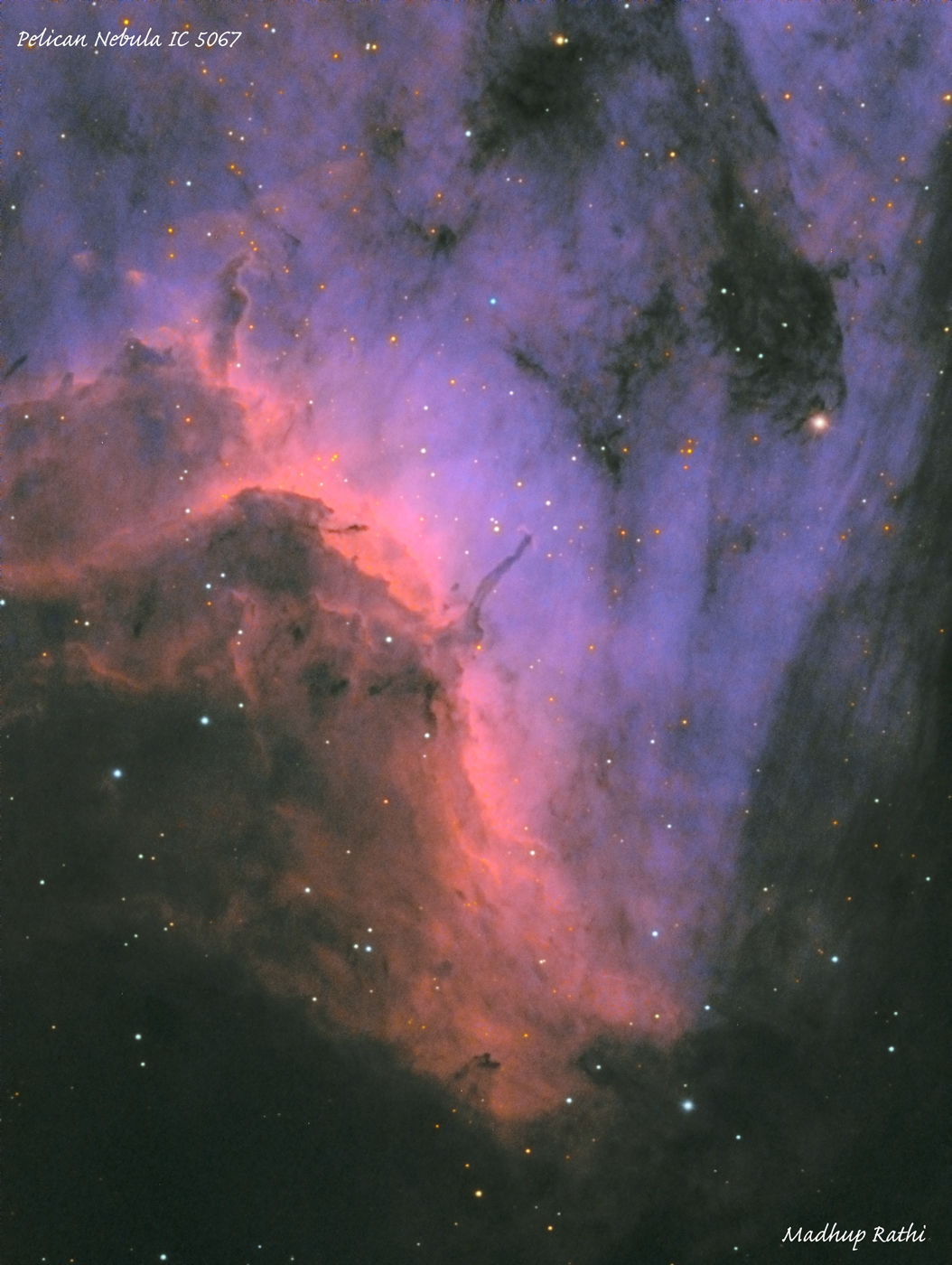The prominent ridge of emission featured in image is designated IC 5067. It is part of a larger nebula with a distinctive shape, popularly called The Pelican Nebula, whose ridge spans about 10 light-years.
Dark shapes are clouds of cool gas and dust, and the colorful clouds in this image are getting lighted up from energetic radiation from young, hot, massive stars.
New stars are also forming within the dark shapes. Twin jets emerging from the tip of the long, dark tendrils, one in the center and one toward top-left are the telltale signs of an embedded star-in-the-making.
This nebula, like most other nebulae, is constantly changing. Millions of years from now this nebula will appear completely different.
This nebula is about 2,000 light-years away, in the high flying constellation Cygnus.
Most of this nebula is visible in infrared and pinkish colors to human eyes, which are primarily made of Hydrogen Alpha gas. But, there are Oxygen III and Sulphur II gases also present, but too faint for human eyes. This image is a narrowband image (i.e. using a filter which lets only certain spectrum to pass through) and then I have assigned combinations of human-friendly colors to each gas (i.e. Green – HA, Red – SII, Blue – OIII) to get a false-color but prettier image than basic pink shades.
I took this image over 16 hours (15-Ha, 15-OIII and 13-SII of 20 minutes each).
